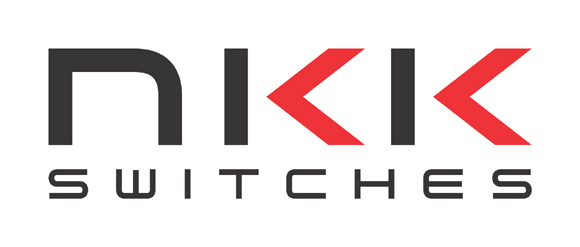Bud Schultz, CPA, Vice President of Finance for NKK Switches, presented his company’s experience with demand planning during a recent webinar. The following is a brief summary of Bud’s key points; view the complete webinar by clicking here.
Q: Tell us about NKK’s business and demand planning challenges.
NKK Switches, based in Scottsdale, Arizona, is a leading manufacturer and supplier of electromechanical switches. The business involves many different switch types—toggles, push-button, rotary, even some programmable switch types. We are known for our high quality, and for our ability to meet an exceptionally broad range of customer requirements on a turnkey (custom configuration) basis. NKK Switches produces customized solutions from component parts sourced exclusively from manufacturing facilities in Japan and China.
There are literally millions of possible switch configurations, and we never know what configured solutions our customers will order. This makes our demand highly intermittent and exceptionally difficult to forecast. In fact, until fairly recently we considered our demand unforecastable. We operated on a build-to-order basis, which meant that customer orders could not be fulfilled until their component parts were produced and then fashioned into finished goods by NKK. This resulted in long lead-times, painful for our customers and a competitive challenge for our sales organization.
Q: What did you expect to get from improved product demand forecasting?
When we began to investigate the value of demand forecasting software (SmartForecasts from Smart Software), we tried to view the decision from a Return on Investment (ROI) point of view. We did some capital budgeting, making assumptions about potential reductions in inventory levels, reduced inventory carrying costs and other potential savings. Although the capital budgets returned positive returns on investment, we nevertheless were unable to move forward based on that information. We lacked confidence in our assumptions, and we were worried that we wouldn’t be able to justify the safety stock and inventory levels that the software would suggest.
What we didn’t expect was a challenge from our parent company. In light of the capabilities of a newly implemented ERP system, they would consider a new approach. If we could produce demonstrably reliable demand forecasts, they would consider procuring raw materials and producing switch components on a build-to-forecast rather than build-to-order basis. This opened the door to a much more profound impact. We tracked actuals against forecasts over a twelve-month period and found that our forecasts, particularly in aggregate, were exceptionally accurate: actual demand was within 3% of forecast. Once we were able to prove the validity of our forecasts, we were able to move forward with the parent company’s plan to manufacture product based on those forecasts.
Q: How did accurate forecasts of product lines with intermittent demand data transform NKK’s operations?
From the many different combinations we manufacture to order, individual switch parts can show very intermittent demand (long periods with zero orders and then seemingly random spikes), but we can identify more consistent patterns across switch series. All of the part numbers in a given series have common components and raw materials, such as plastic housing, brackets and other hardware, gold, silver and LEDs.
Providing our manufacturing facilities with reliable forecasts ended up allowing us to make dramatic changes. Our manufacturing plants could start procuring raw materials that in the aggregate would eventually be used in production of different part numbers within that series, even if the specific part numbers to be produced were unknown at the time the forecasts were made. And in many instances, despite the irregular demand history data, it was even possible for the suppliers to manufacture specific part numbers based on the forecast.
Once the program is fully implemented, we anticipate our leads times will be reduced to half the time or even less. Shorter lead times will result in lower reorder points, resulting in higher service levels while reducing our inventory requirements.
Bud Schultz leads all finance and accounting functions at NKK. His background as a Certified Public Accountant, attorney, engineer and pilot for the US Air Force provide unique perspective on finances for engineering and manufacturing operations.
Related Posts

Future-Proofing Utilities: Advanced Analytics for Supply Chain Optimization
Utilities in the electrical, natural gas, urban water, and telecommunications fields are all asset-intensive and reliant on physical infrastructure that must be properly maintained, updated, and upgraded over time. Maximizing asset uptime and the reliability of physical infrastructure demands effective inventory management, spare parts forecasting, and supplier management. A utility that executes these processes effectively will outperform its peers, provide better returns for its investors and higher service levels for its customers, while reducing its environmental impact.

Centering Act: Spare Parts Timing, Pricing, and Reliability
In this article, we’ll walk you through the process of crafting a spare parts inventory plan that prioritizes availability metrics such as service levels and fill rates while ensuring cost efficiency. We’ll focus on an approach to inventory planning called Service Level-Driven Inventory Optimization. Next, we’ll discuss how to determine what parts you should include in your inventory and those that might not be necessary. Lastly, we’ll explore ways to enhance your service-level-driven inventory plan consistently.

Why MRO Businesses Need Add-on Service Parts Planning & Inventory Software
MRO organizations exist in a wide range of industries, including public transit, electrical utilities, wastewater, hydro power, aviation, and mining. To get their work done, MRO professionals use Enterprise Asset Management (EAM) and Enterprise Resource Planning (ERP) systems. These systems are designed to do a lot of jobs. Given their features, cost, and extensive implementation requirements, there is an assumption that EAM and ERP systems can do it all. In this post, we summarize the need for add-on software that addresses specialized analytics for inventory optimization, forecasting, and service parts planning.











